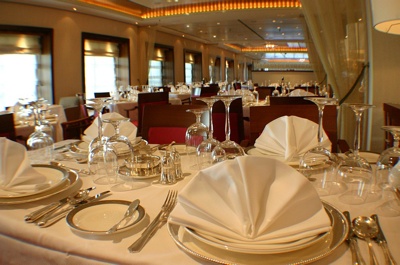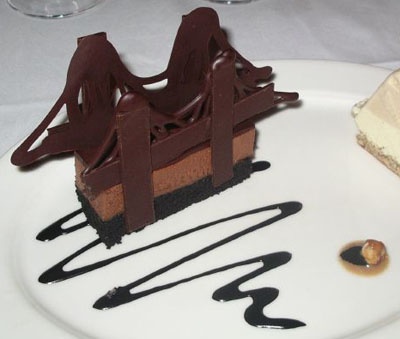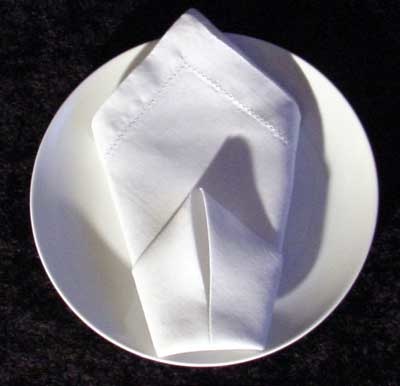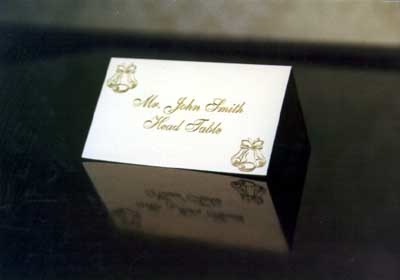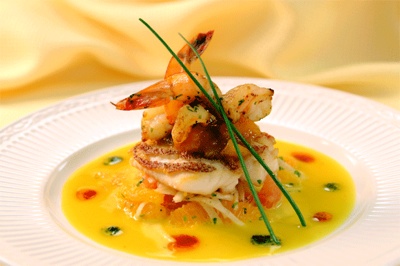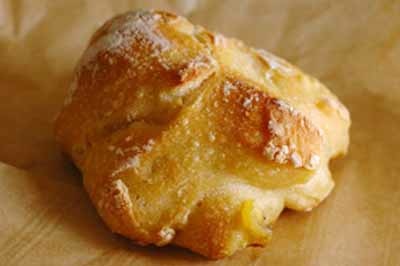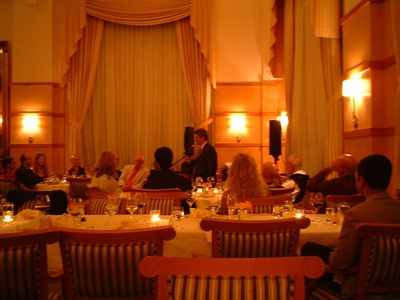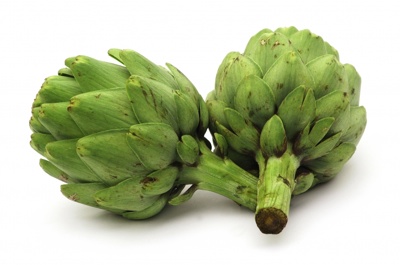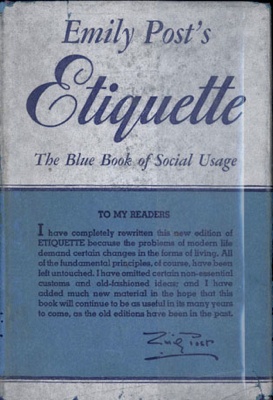 Animals
Animals  Animals
Animals  Weird Stuff
Weird Stuff 10 Weird Things People Used to Do at New Year’s
 Our World
Our World 10 Archaeological Discoveries of 2025 That Refined History
 Weird Stuff
Weird Stuff 10 Fascinating Facts You Might Not Know About Snow
 Miscellaneous
Miscellaneous Top 10 Things Crypto Was Supposed to Change & What Actually Did
 History
History 10 Huge Historical Events That Happened on Christmas Eve
 Music
Music 10 Surprising Origin Stories of Your Favorite Holiday Songs
 History
History 10 Less Than Jolly Events That Occurred on December 25
 Weird Stuff
Weird Stuff 10 Funny Ways That Researchers Overthink Christmas
 Politics
Politics 10 Political Scandals That Sent Crowds Into the Streets
 Animals
Animals 10 Species That Refused to Go Extinct
 Weird Stuff
Weird Stuff 10 Weird Things People Used to Do at New Year’s
 Our World
Our World 10 Archaeological Discoveries of 2025 That Refined History
Who's Behind Listverse?

Jamie Frater
Head Editor
Jamie founded Listverse due to an insatiable desire to share fascinating, obscure, and bizarre facts. He has been a guest speaker on numerous national radio and television stations and is a five time published author.
More About Us Weird Stuff
Weird Stuff 10 Fascinating Facts You Might Not Know About Snow
 Miscellaneous
Miscellaneous Top 10 Things Crypto Was Supposed to Change & What Actually Did
 History
History 10 Huge Historical Events That Happened on Christmas Eve
 Music
Music 10 Surprising Origin Stories of Your Favorite Holiday Songs
 History
History 10 Less Than Jolly Events That Occurred on December 25
 Weird Stuff
Weird Stuff 10 Funny Ways That Researchers Overthink Christmas
 Politics
Politics 10 Political Scandals That Sent Crowds Into the Streets
Top 10 Rules for Fine Dining
Have you ever been out for dinner and been confused by the number of knives and forks? Don’t know what to do with that napkin? This is a list of the top 10 tips to help you get by if you are invited to a fine dining experience. The rules may vary from place to place but this should serve as a good guide.
10Knives and Forks
This is one of the most common problems for people that are used to flatware (knives and forks) being brought to the table with each course. On a properly set table you usually see a series of forks on the left side of your plate, and a series of spoons and knives on your right (the table is always set for right handed people). The very simple rule is to always work from the outside in; the cutlery farthest away from your plate is for the first course. If you are still unsure what to do, wait and follow your hostess or host.
Always take small portions of food at a time and put your cutlery down between each mouthful. When you put your cutlery down, place it on the plate (never back on the table and do not rest it half on and half off the plate); cross the tips of the two pieces (if there are two) or angle it if there is just one. This tells the server that you are not finished. When you are finished, place your knife and fork together in the centre of the plate vertically. The tines of the fork should point up and the blade of the knife should point to the centre towards the fork.
You should always hold both your knife and fork – you should not cut your food up at the start and then use your fork only (this is an American tradition and is generally fine in America, but not in Europe). The tines of your fork should always point down toward the plate – for difficult foods like peas, you should use your knife to squash them onto the tip of the fork. The fork is not a scoop, do not use it like one.
Do not pick up any cutlery that you drop to the floor. It will be replaced by the server.
Take your dining expertise up another luxurious notch with The Mere Mortal’s Guide to Fine Dining at Amazon.com!
9Soup and Pudding
Soup spoons generally come in two shapes – one is shaped like a round bowl, and the other is shaped like an egg. When eating soup the soup bowl must stay on the table. It is never acceptable to drink your soup from the bowl. To eat your soup, push your spoon away from you starting at the centre of the bowl to the farthest edge. Bring the spoon to your mouth and drink the soup from the edge – do not put the whole spoon in to your mouth. Do not slurp.
Pudding is not to be confused with dessert – they are two entirely separate courses though one can take the place of the other. Pudding is a sweet course, whereas dessert is usually fruit or cheese. To eat pudding you are usually given both a fork and a spoon. The pudding spoon is held in the same way as your knife, with the bowl of the spoon facing inwards, and (for right handed people) is held in the right hand. The pudding fork is used as a pusher only. You do not put a pudding fork in to your mouth. Using the fork, push a small portion of your pudding on to the angled spoon. As you lift the spoon to your mouth, tilt it a little so the bowl is now facing upwards. When you have finished eating, the same rules apply here for placing your cutlery back on the plate.
Occasionally the pudding fork and spoon will be found directly above your plate, rather than in the cutlery at the side.
8 Napkins
A napkin is used for one thing only – dabbing the mouth. Never wipe your mouth with a napkin, you should always dab. Your napkin should be unfolded and placed on your knees. It is never acceptable to tuck your napkin in to the front of your shirt or dress. In ancient times this was normal, nowadays it is the height of vulgarity.
If, for some urgent reason, you must leave the table before you have finished, you should place your napkin on your seat (after you have asked your hostess to excuse you). This tells the server that you plan to return. When you are ready to sit down again, simply replace the napkin upon your knee.
If your napkin drops to the floor, it is acceptable for you to pick it up unless the house has a butler or servants near the table. In those cases they will remove the fallen napkin and replace it with a fresh one. Never place anything in your napkin (especially not food).
When you have finished eating, the napkin should be placed tidily (but not refolded) to the left side of your plate (but not on your plate).
7Glasses and Wine
Normally you will have two or more glasses at the table. Your glasses are on the right upper side of your plate. You can have up to four glasses. They are usually arranged in a diagonal or roughly square pattern. The top left glass is for red wine. It will usually have a fairly large bowl. Directly below that you will find the white wine glass, that will be smaller. At the top right you will find a champagne glass or perhaps a smaller glass for dessert wines or port. on the bottom right is your water glass.
If someone offers a toast to you, you remain seated while the others may stand. Never raise a glass to yourself. You should never touch glasses with other guests when toasting – it is enough to raise the glass in their direction. Keep eye contact when toasting. If you wish to raise a toast, never tap the side of your glass with a utensil, it is the height of rudeness and you could damage very expensive glassware. It is sufficient to clear your throat.
Do not gulp your wine. It is impolite to become drunk in front of the other guests or your hosts. Sip quietly and occasionally. The purpose of the wine at dinner is to complement your food, not to help you along to way to drunkenness. If your server is refilling your glass, you should never place your hand over or near the glass to indicate when you have enough. You should simply tell the server that you have sufficient or tell him prior to pouring that you do not wish to have any more. Never hold the glass for the server to pour your wine.
6 Body and seating
There will usually be a seating plan near the door of the dining room, or place cards on the table. If neither exist, wait to be seated by your hostess. There are strict rules as to whom sits where at the table and it would be extremely embarrassing if you had to be asked to move, both for you and your hostess. Remember, the hostess governs the table, not the host. The host will sit at the head of the table (this is normally the seat farthest away from doors or commotion. To his right sits the wife of the guest of honour and to his left sits the wife of the next gentleman in order of importance. The hostess will have the guest of honour on her right, and the second most important gentleman on her left. The remainder of the seating plan can often be arbitrary but will always alternate based on gender.
When you are seated at the table your feet should be firmly planted on the floor in front of you. Do not cross your legs, do not lean back on your chair, and do not shake your feet. Your elbows should be at your side at all times. Sit upright and do not lean over your plate when you are eating; bring your food to your mouth.
In England, the correct behaviour is to keep your hands on your lap when you are not using them. In France the rule is to keep your hands above the table at all times. You may place them on the edge of the table but you must never put your elbows on the table.
5 Food in General
You must not start eating until everyone has been served. If there are a large number of guests, the hostess may indicate that you may begin before everyone is served. If this is the case, you should begin. If you take a mouthful which contains something you cannot swallow, you should excuse yourself and remove it in privacy. Absolutely do not do so at the table table and never place it in your napkin or on your plate for all to see.
If you are eating something that has stones or pips in it, you may use your forefinger and thumb to remove them from your mouth. Place them on the side of your plate. You must never use a toothpick at the table, nor should you blow your nose. If you have something stuck in your teeth that you must remove, excuse yourself and go to the bathroom to remove it. It is also acceptable to remove bones with your fingers.
Do not salt your meal before you have tasted it; it is an insult to your hostess. If you do need salt, use the tip of a clean knife (if a salt spoon is not provided in the salt dish) to transfer some salt to the side of your plate which you can use for dipping.
Small pre-dinner snacks must always touch your plate before being put in the mouth. Do not take it from the serving tray and put it straight in your mouth.
4 Bread
If you are having bread with your meal there will usually be a small side plate on the left hand side (or above your left left hand cutlery) of your place setting; if so, use it. If not, it is perfectly acceptable to place your bread directly on the table to the left of your plate. You should not put the bread on your plate directly.
Bread should never be cut. When you wish to eat it, tear a bite sized piece off with your fingers. Don’t worry about crumbs if there are no side plates – the servers will sweep each setting between courses if needs be. Normally there should never be butter served at a dinner table, but these days it is seen from time to time. If there is butter, use your butter knife (found either on the bread plate or to the extreme right of your setting) and transfer sufficient butter for your bread in one go. Place it on the side of your side plate. If there is no side plate your hostess should ensure that you have your own individual butter dish. You should butter each piece of bread as you eat it, rather than buttering it all up front.
If you don’t want to don a bow tie and wingtips for the evening, slip into something more comfortable instead and reach for the Guide to Healthy Fast Food Eating at Amazon.com!
3 Conversation
Unless you know every guest at the table very well, you should not discuss politics, religion, or sex at the table. You should also avoid any controversial subjects that may fall outside of the scope of those three topics. Dinner is meant to be enjoyed, not to be a forum for debate.
You should give equal time to the person sitting on your left and your right. It can be difficult to talk easily with strangers but it is absolutely imperative that you do so that everyone can join in on the conversation. This is such a strict rule that I know of a lady of high standing who was seated next to her greatest enemy. In order to comply with the rule, she simply recited the alphabet to him the whole time. Having said that, I would not recommend this behaviour at all as it implies another kind of rudeness.
Do not yell to the ends of the table. You should speak in low tones but you do not have to act like you are in Church or a Public Library – dinner is meant to be enjoyed and the conversation is a fundamental part of that. If you are not very confident with speaking to others, a good rule of thumb is to ask the person questions about themselves (never personal questions). Everyone loves to speak about himself and this will also make you appear to be a good listener.
2 Difficult Foods
Some foods can be difficult to eat. This is how you should do so:
Artichokes: using your fingers break of one leaf at a time. Holding the spiny end, dip the base in your dish of melted butter or sauce and suck out the fleshy interior with your teeth. Place the remains on your place. Once you reach the soft centre called the heart, use a knife and fork to eat it as you would a steak.
Asparagus: Pick up each stem with your left hand and dip the tip in the butter or sauce. Eat it one bite at a time, never put the whole stalk in your mouth. If you are left with a hard base, you may discard it on your plate. The thick white variety sometimes seen in Europe should always be eaten with a knife and fork, never with your fingers.
Cheese: Small round cheese must always be cut in small pie-shaped wedges. Larger cheeses that have already been cut into a large should be cut from the pointy end first (this is called the nose).
Escargots: These snails are usually served with a special gripping tool and a small fork. Grip the snail shell with the gripper and use the fork to turn the meat out.
Fruit: If a dessert course is served, you will probably have a dessert fork and knife. You should use these on larger pieces of fruit.
1 General Dont’s
Don’t make a fuss. If you don’t like something, leave it.
Don’t blow on hot food to cool it down. Wait for it to cool itself.
Don’t smoke at the table unless invited to by the hostess.
Don’t photograph the table, it looks desperate.
Don’t move your plate after your meal has been served.
Don’t treat the servers badly. It makes you look common.
Don’t eat chicken or chops with your fingers.
Don’t point with your cutlery.
Don’t hold your fork while you drink your wine.
Don’t overstay your welcome
Finally, be sure to say thank you to your host before leaving and send a letter of thanks the next day (if you are lucky you will be invited back).
Bon appetite!
